Our final puffin hunting adventure in Scotland took us on another boat trip, this time to the Isle of May, a small (57 hectare) island just off the Fife coast. We boarded the ferry across to the island in the tiny town of Anstruther, as we sat waiting to depart we once again marveled at how lucky we were with the weather.
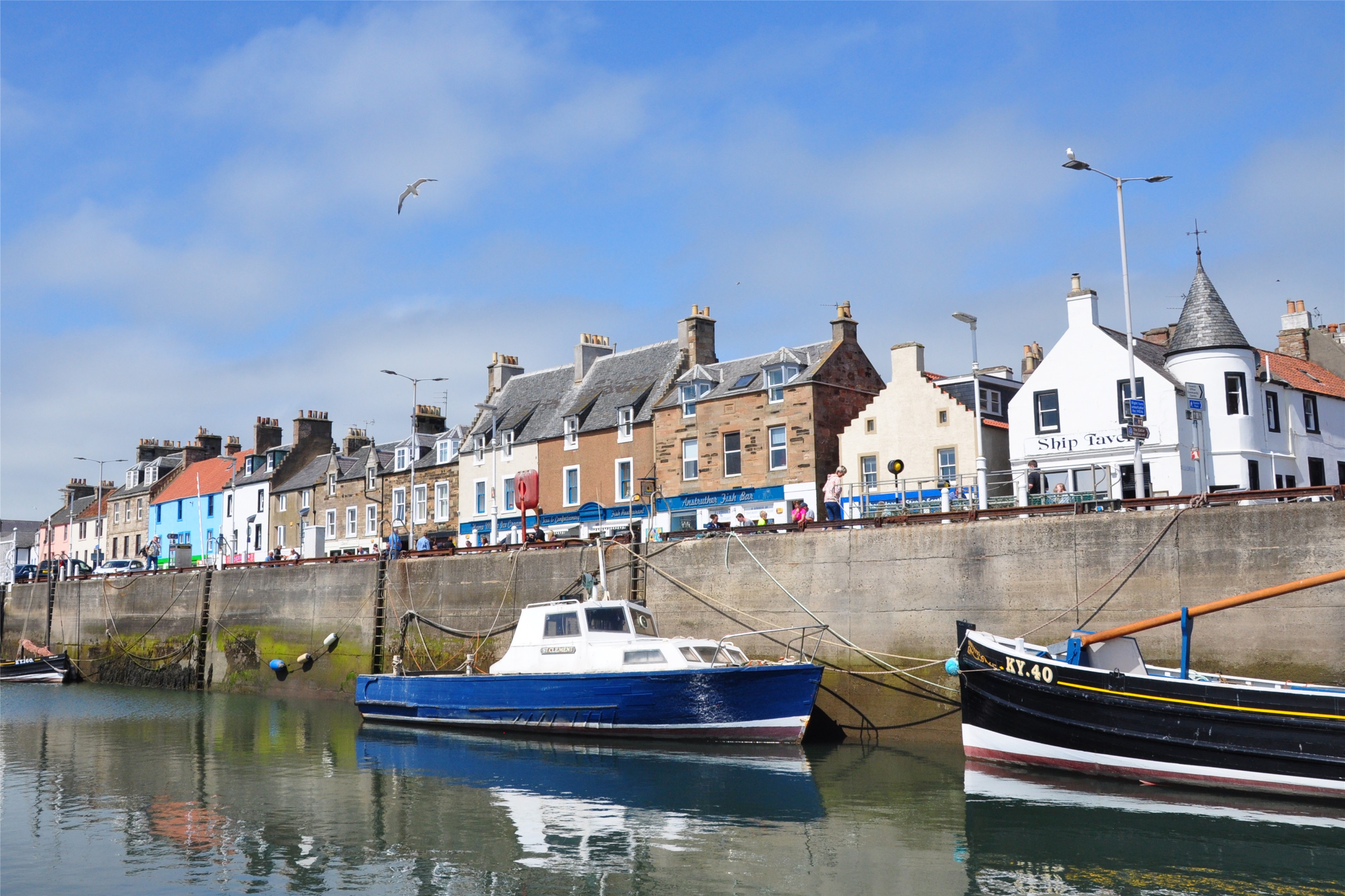
The crossing to the Isle of May took about an hour, but with the fine weather it was quite pleasant. As we approached the island we were able to pick out many of the remaining structures on the island; two lighthouses and fog horns.
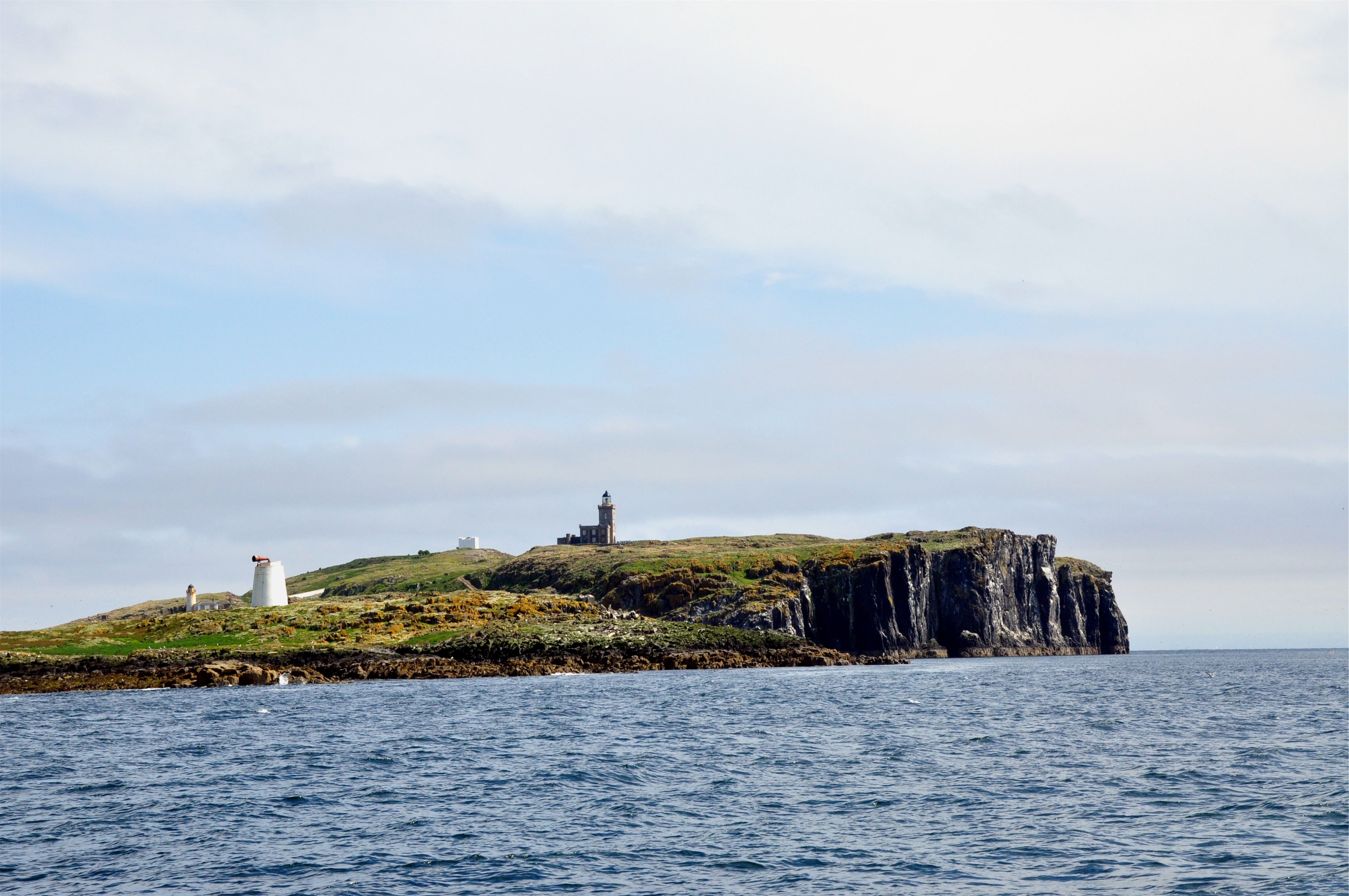
The entire island is now a National Nature Reserve, although it has a long history dating back to the 9th Century when it was home to one of the earliest Christian churches in Scotland.
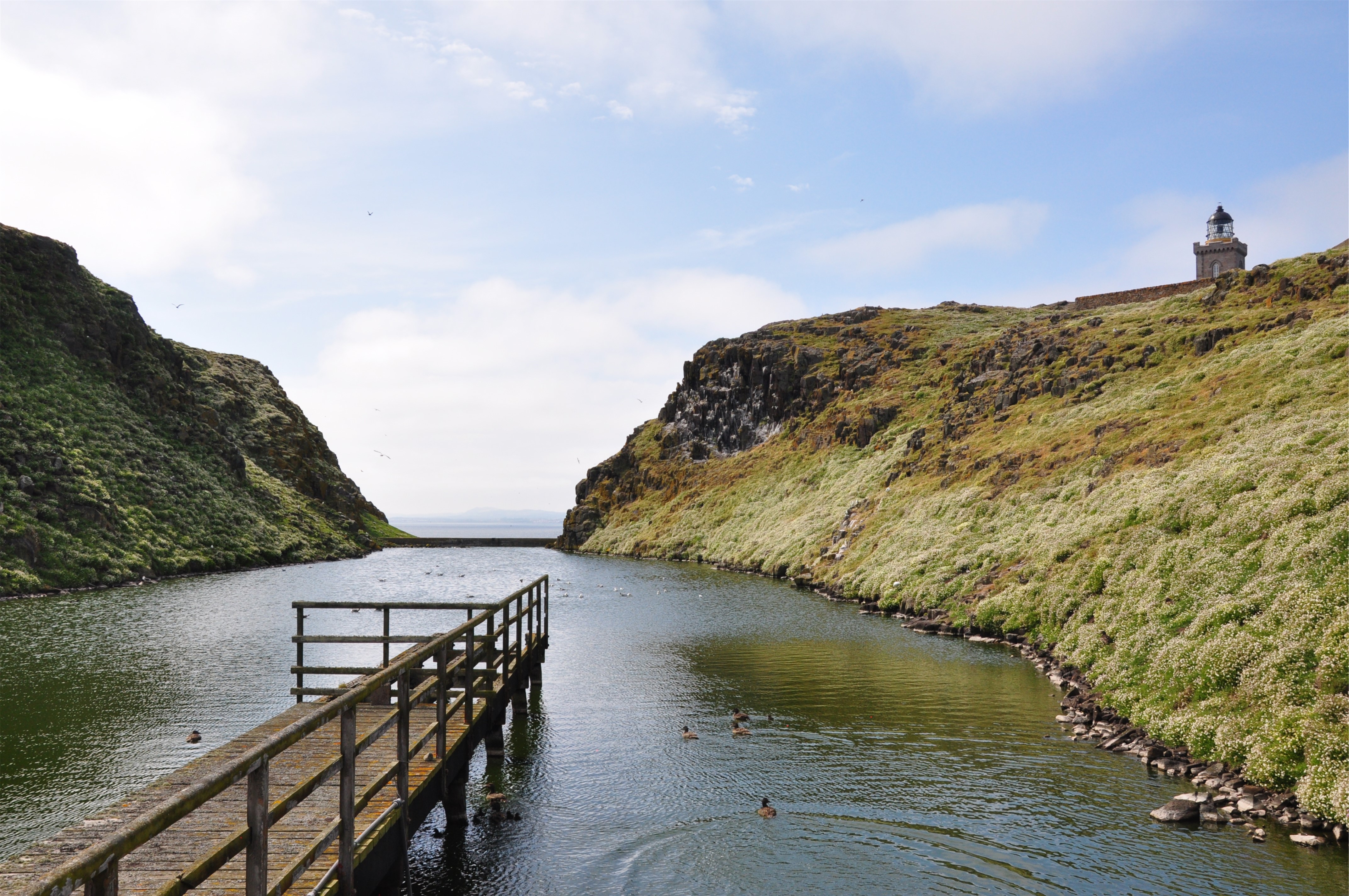
More recently the island served as a navigational beacon with several lighthouse keepers living on the small island. After we disembarked, we took the track through the old settlement towards the opposite side of the island. At the edge of the buildings was a man-made lake used to store fresh water for the generators on the island. Today the lake provids a sheltered home to many pairs of Eider Ducks.
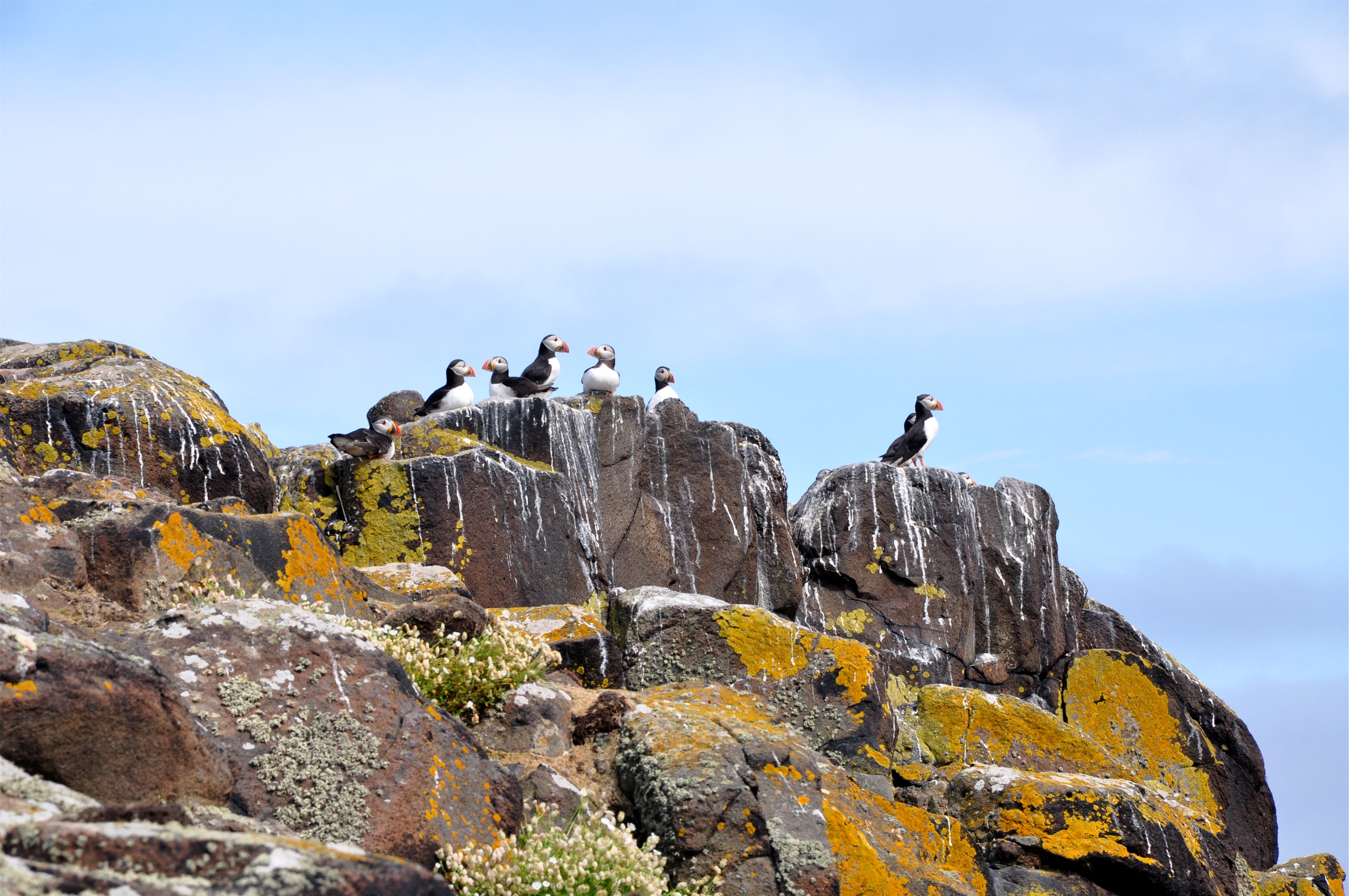
As we followed the track around the island we got our first glimpse of the puffins we had come to see. Although we knew that puffins had arrived on the island to start nesting, I was surprised at just how many we saw just sitting around near the trail.
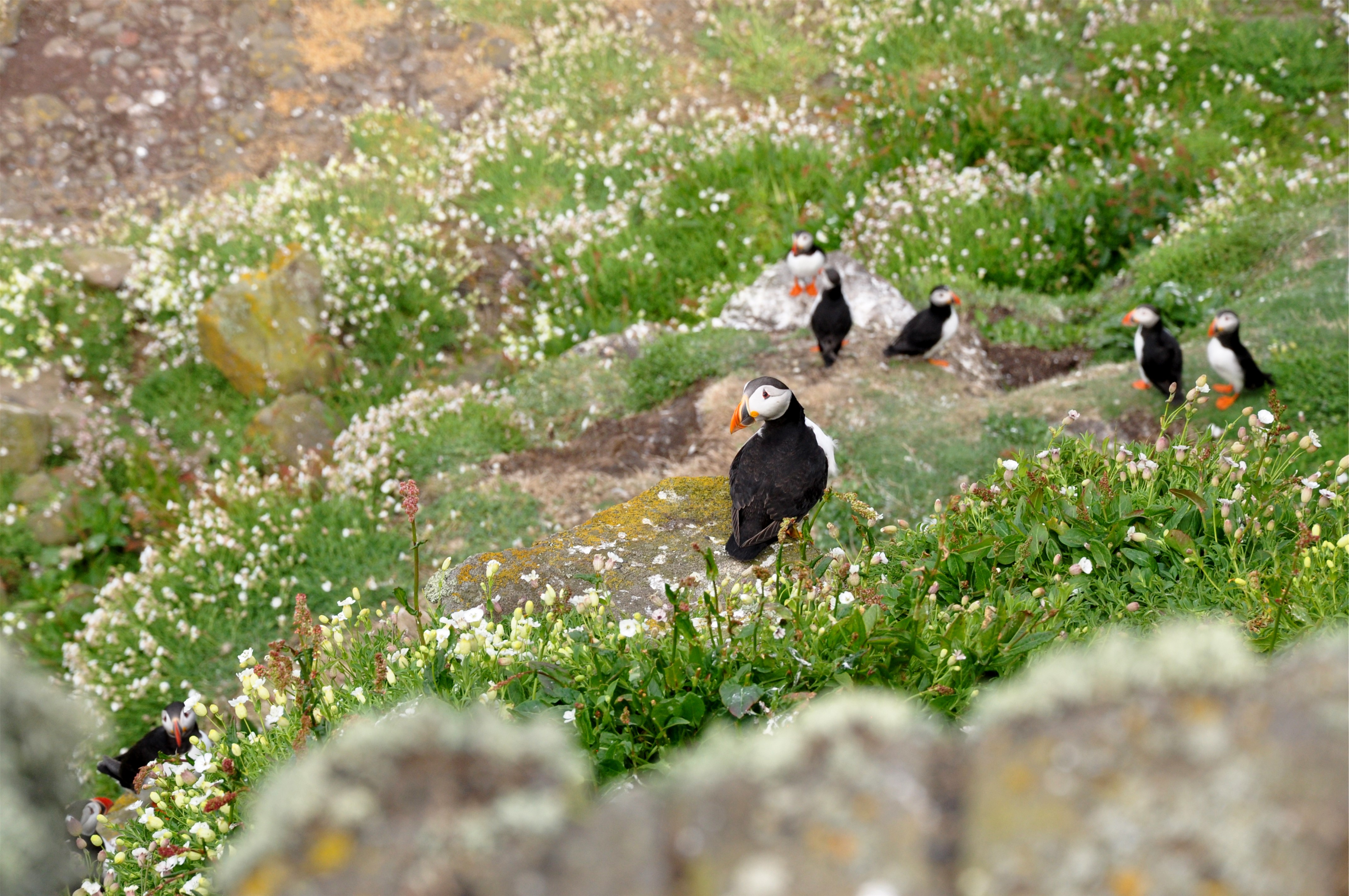
We made our way slowly around the island, stopping often to watch the large groups of puffins. With the first chicks, called pufflings, just starting to hatch we saw several puffins perched on the rocks having returned from sea with a beak full of fish.
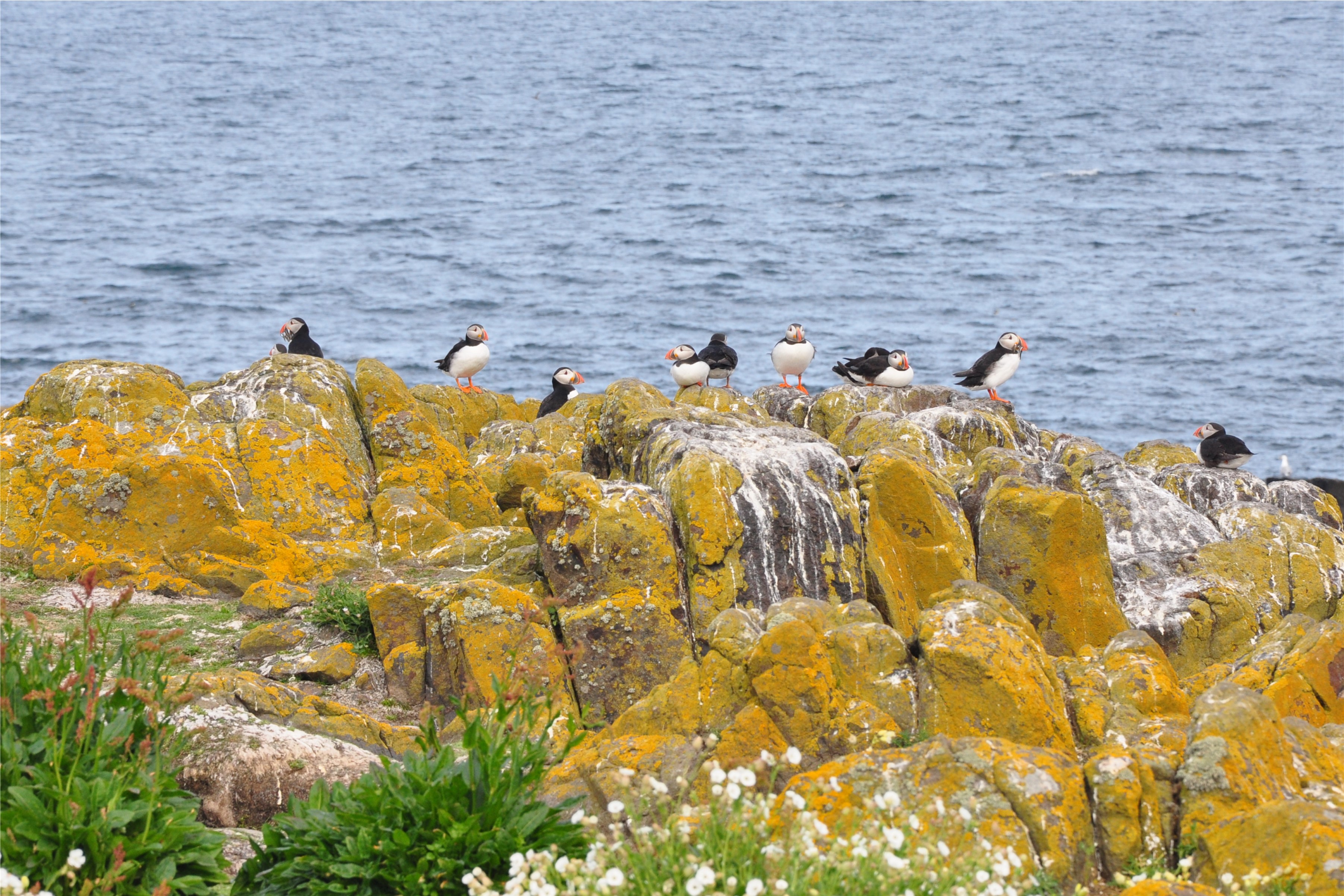
The tracks cross back and forth across the island and one of the loops took us past the main lighthouse on the island. This Stevenson Lighthouse, named after Robert Stevenson the engineer who designed it in 1816, looked more like a castle than a lighthouse.

After climbing the tower to take in the views of the entire island, we set off again in search of some more sea birds. Our next stop was the Low Light, a secondary lighthouse that was built in 1843 to provide mariners with a second light, which when lined up with the light from the main Stevenson Lighthouse would ensure they would miss the nearby rocks.

As we continued around the island we began to spot more and more puffins. Entire hillsides were dotted with the small birds standing around outside their burrows. Whenever we looked up we were able to spot additional puffins flapping furiously as the came and went from the island.
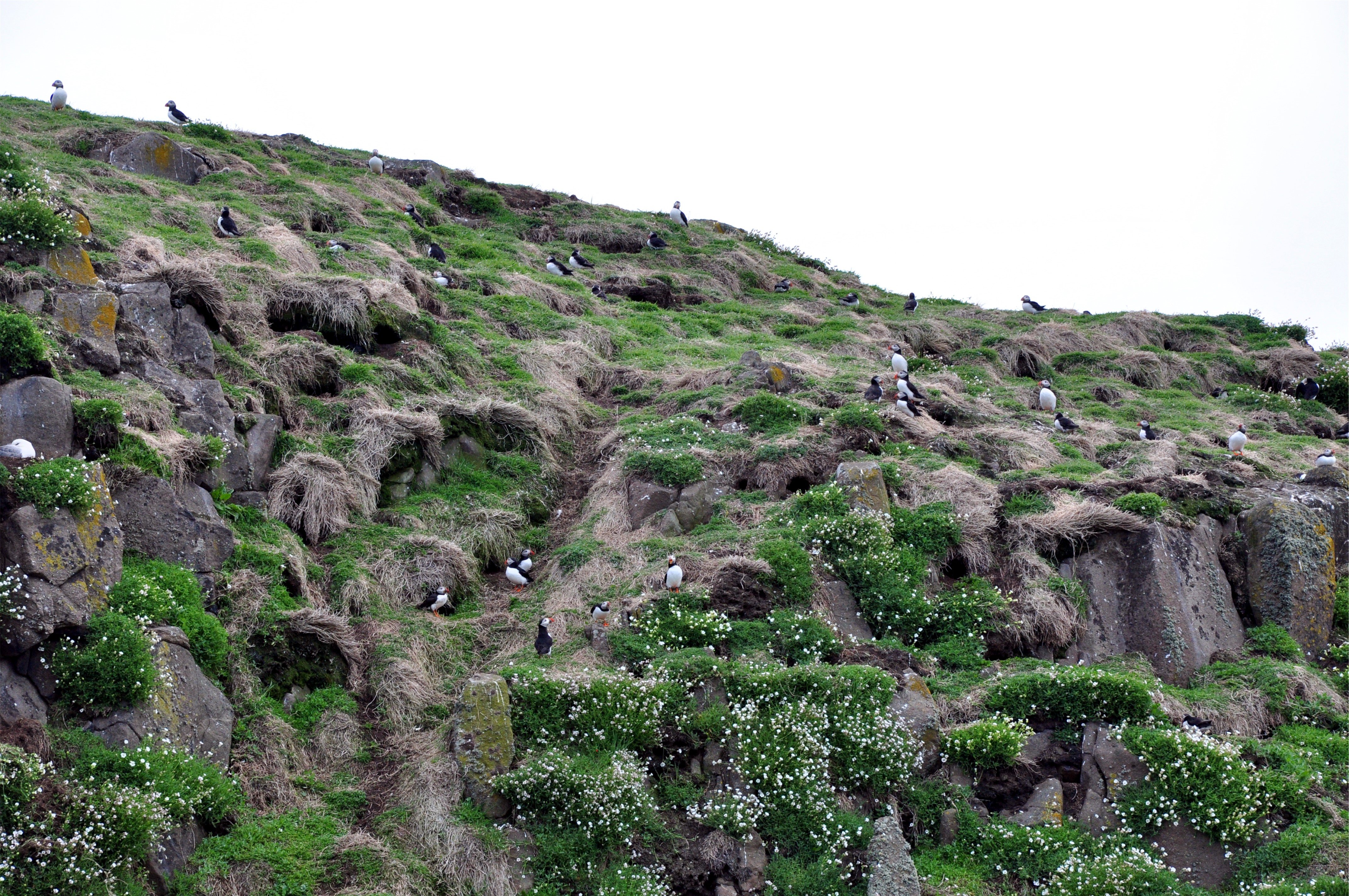
As we crossed to the southern end of the island we started to see a variety of seabirds perched on the rocky ledges below us. Despite the small size, the island has recorded over 285 species of birds. We saw a few pairs of Razorbills that had come ashore to nest.
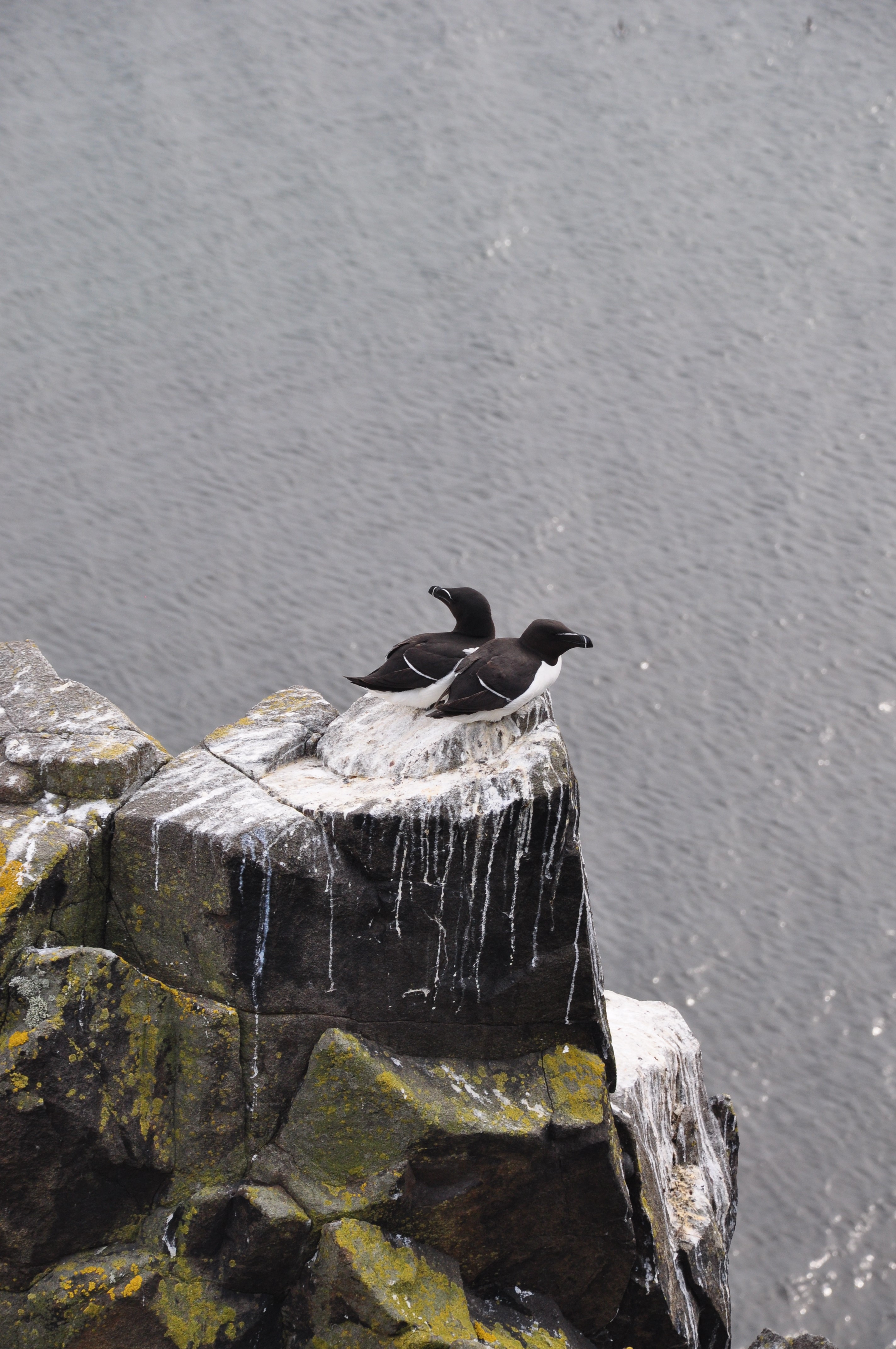
There were even larger groups of Guillemots perched somewhat precariously on the rocks on this side of the island. At this time of year the island can host around 200,000 seabirds.
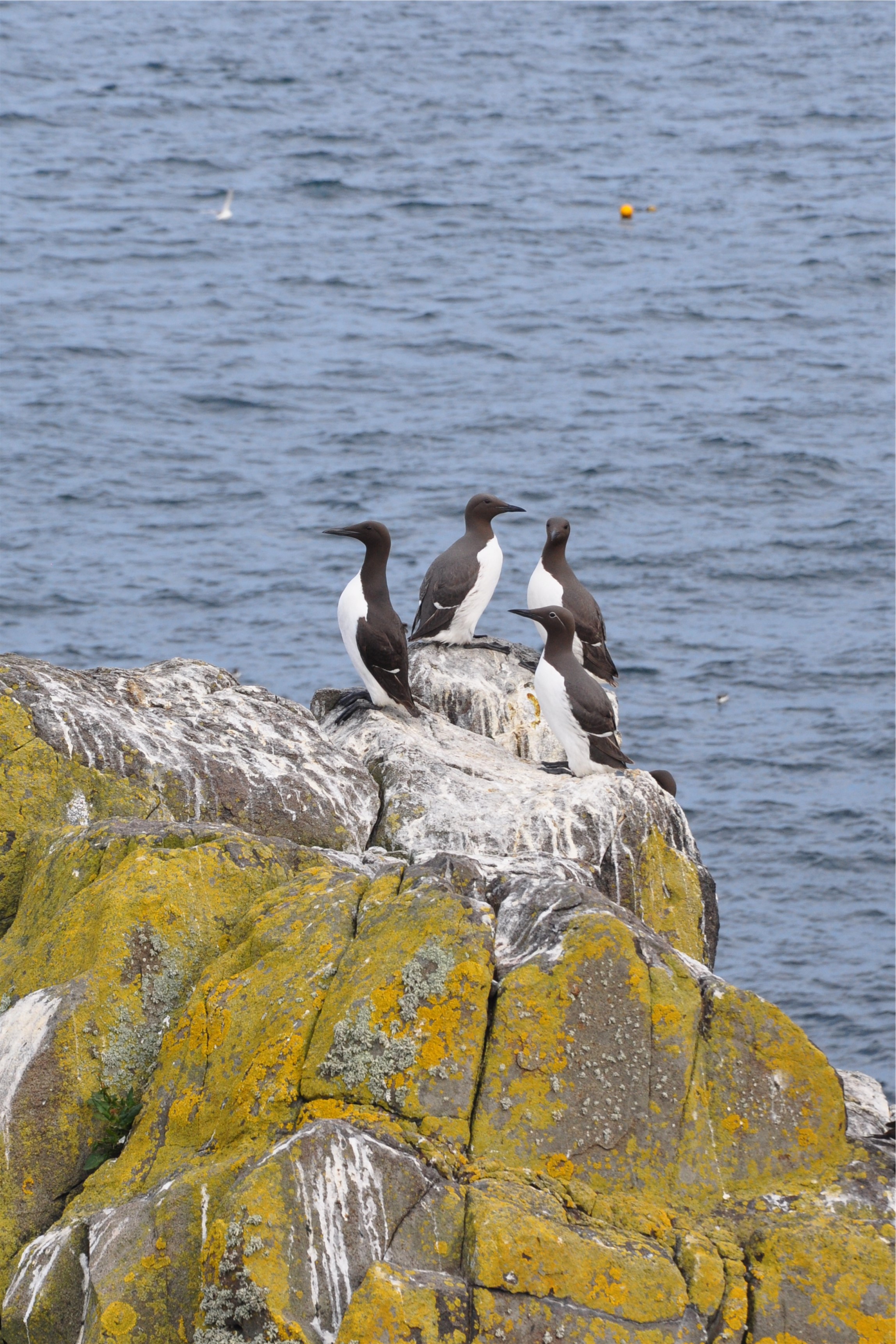
Even although we had been on the island for several hours, the time to depart came quickly. We made our way back to the natural harbour on the eastern side of the island ready for our crossing back to the mainland.
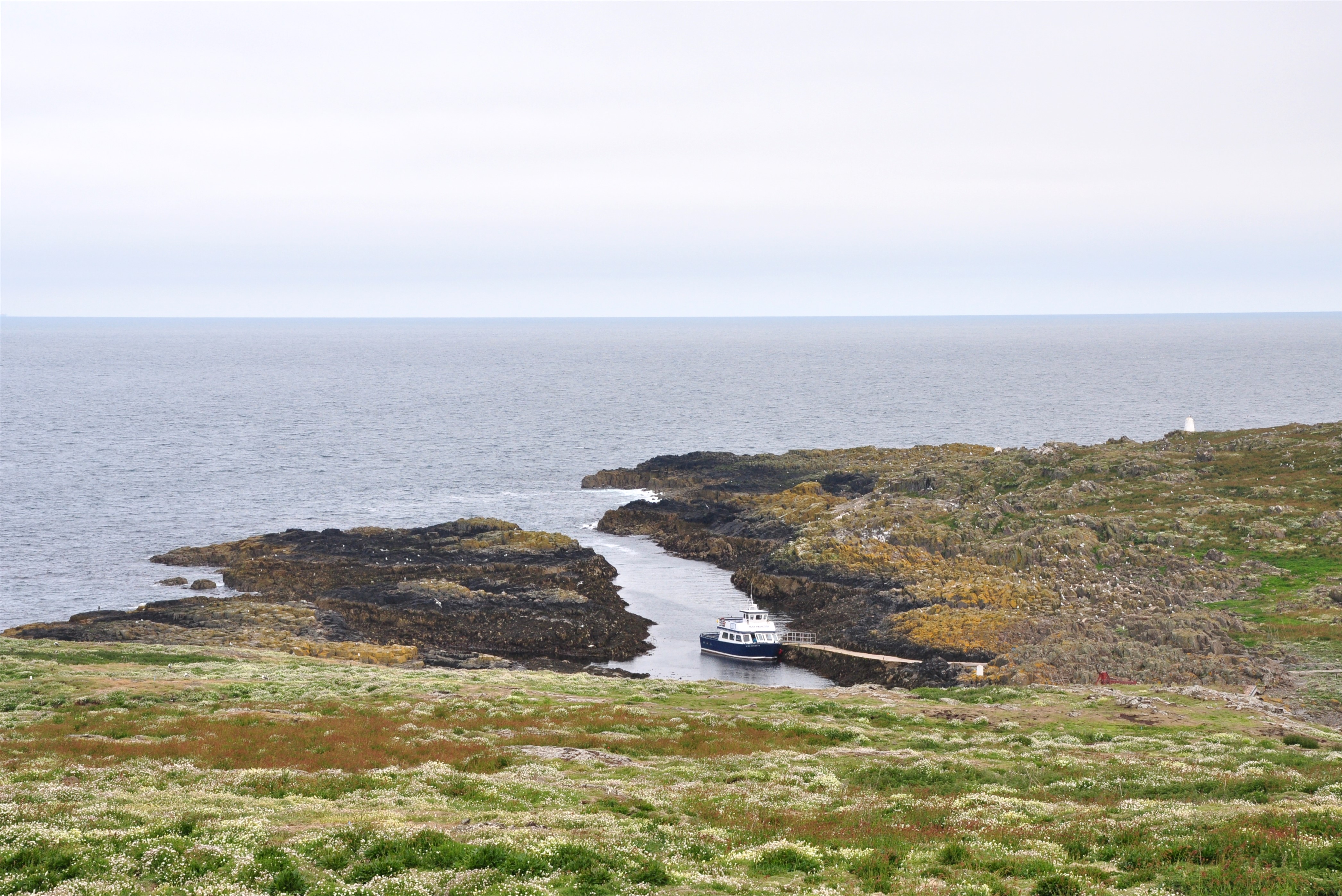
We were pleasantly surprised that the captain took us on a loop around the island before we started the crossing. From the water we were able to get great views of the cliffs that we had walked along, getting a better perspective of all the birds that were nesting there.
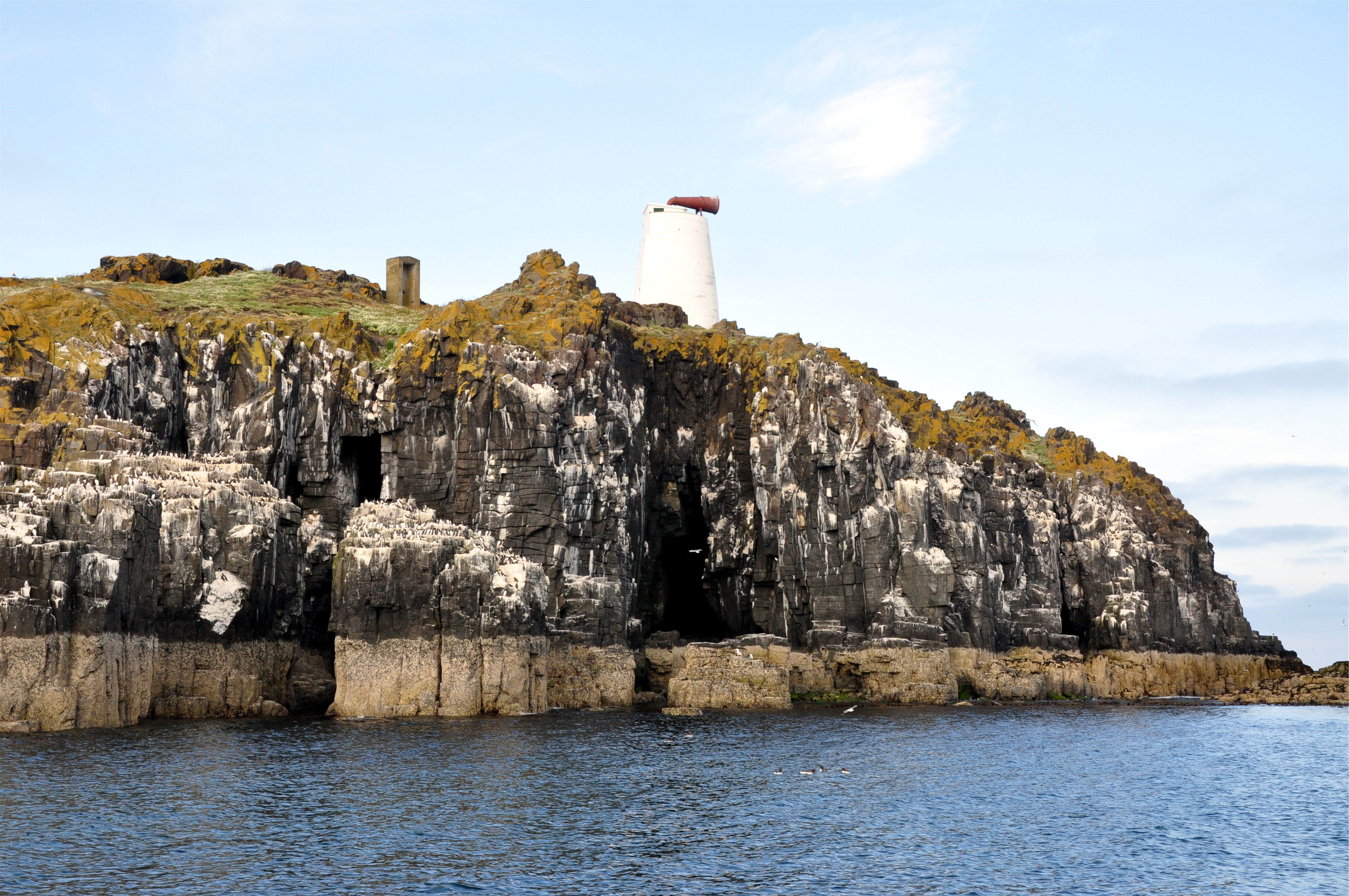
A little further round we came across a huge group of seals basking in the late afternoon sunshine. These harbour seals were much different from the sleek brown fur seals we are used to seeing around the coastline in New Zealand.

We continued our loop around the island, where the captain pointed out the various seabirds and rock formations that form the Isle of May coastline, including a number of small sea caves and rock arches.
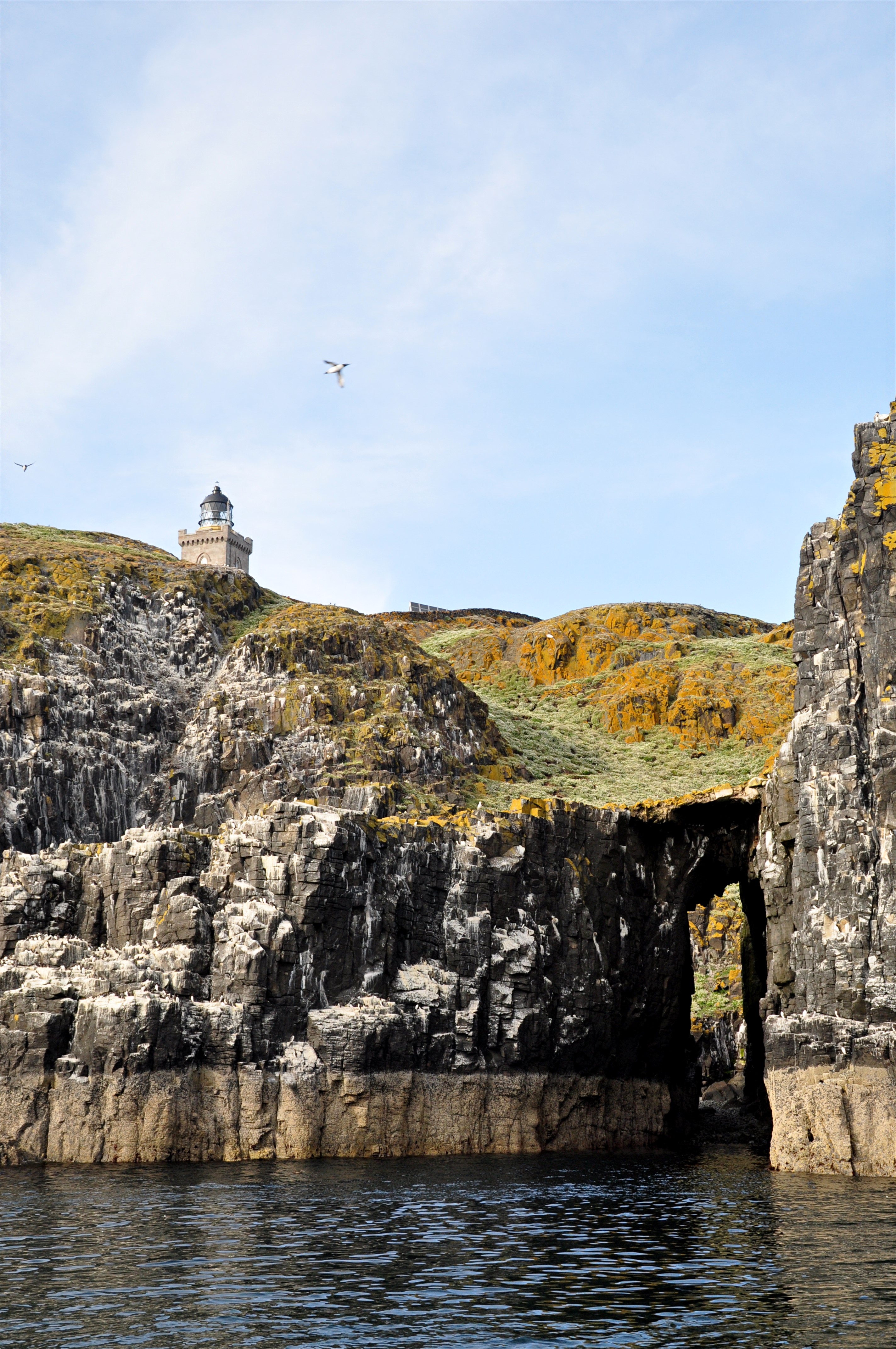
Eventually we completed our circumnavigation of the island and started the crossing back. We couldn’t believe how quickly the time had passed and how much we had seen in just an afternoon on the small island.
